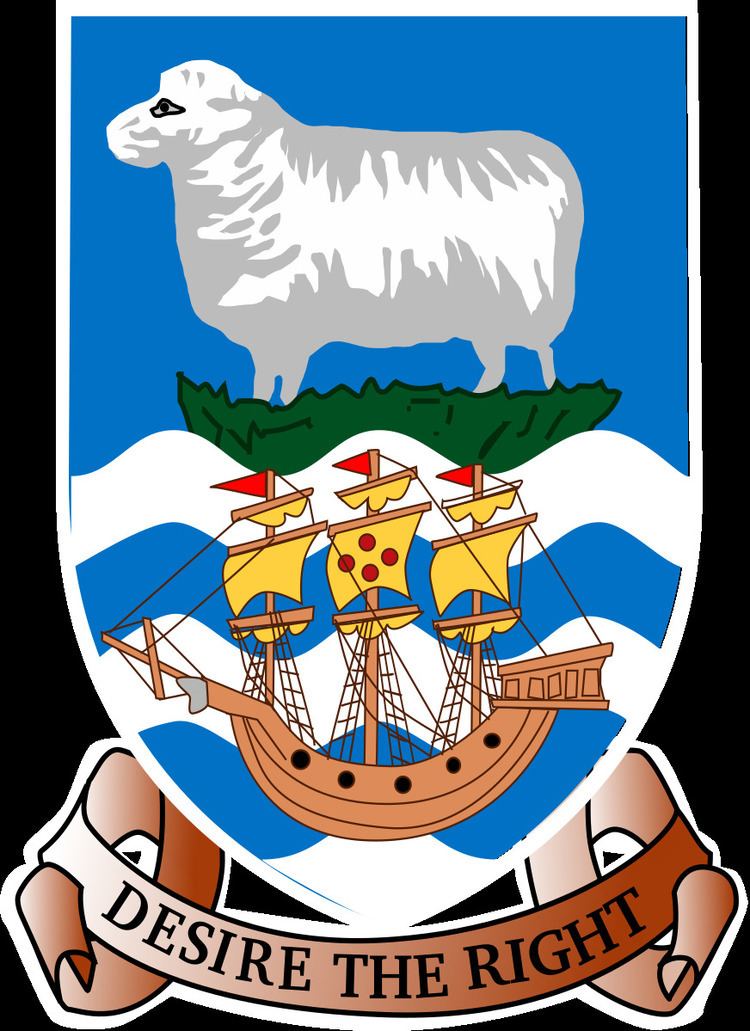Adopted 1948 | ||
 | ||
Escutcheon Per fess azure and barry wavy argent and azure, in chief a ram proper upon a grassy mount issuant from the division vert, and in base a galley proper, its mainsail charged with four torts in cross. Use On the flag and ensign of the Falkland Islands; on the Governor's standard; on the national currency; on government buildings | ||
The coat of arms of the Falkland Islands was granted to the Falkland Islands on 29 September 1948. It consists of a shield containing a ram on tussock grass in the field with a sailing ship underneath and the motto of the Falklands (Desire the Right) below.
The ship represents the Desire, the vessel in which the English sea-captain John Davis is reputed to have discovered the Falkland Islands in 1592; the motto, Desire the Right, also refers to the ship's name. The ram represents sheep farming, which until recently was the principal economic activity of the islands, and the tussock grass shows the most notable native vegetation.
History
In 1876 the islands were granted a seal consisting of an image of HMS Hebe (which brought many of the early British settlers to the islands, including Richard Moody, in the 1840s) in Falkland Sound, overlooked by a bullock (representing wild cattle which once roamed the islands). A new badge for the islands was introduced on 16 October 1925, consisting of the Desire sinister and a sea lion dexter in a shield (per bend or and azure) with the motto of the islands as a slogan. This was replaced by the current coat of arms on 29 September 1948.
